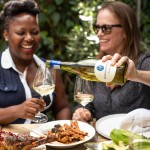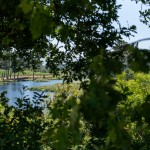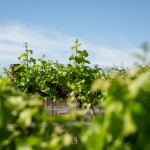Is regionality key to unlocking even greater popularity for South African Chardonnay?
When Chardonnay from California trumped Burgundy in a blind tasting at the 1976 Judgement of Paris competition, it laid the foundation for a New World ‘super brand’, one that appeared to come out of nowhere and dropped like a bomb on the market in the 1980s. Australian and especially American palates flocked in numbers to Chardonnay’s unique blend of fresh dryness with a hint of sweetness. The ‘sunshine in a glass’ was a hit.
It was so popular that by 1988, Californian vines had already outnumbered their French forebears. Worldwide, vineyards under Chardonnay went from a meagre 25 000 hectares to 100 000 hectares in the 1980s, and by the mid-2000s this had reached a whopping global tally of 175 000 hectares. Now the figure is 210 000 hectares.
Along the way, New World winemakers experimented with flavour profiles and heavy-handed oaking that left some consumers scurrying away from over-wooded releases. South African winemakers have learnt from the lessons of their Californian and Aussie counterparts, and, ever since Chardonnay was first planted here in the 1990s, winemakers haven’t been so heavy-handed with the new oak, resulting in less of an ABC (Anything But Chardonnay) reaction. In fact, the converse is the case, as local winemakers have excelled at producing South African Chardonnay to the extent that their products rank among the best in the world at the Chardonnay du Monde awards, and are proving more and more popular with drinkers.
Kleine Zalze Vineyard Selection Barrel Fermented Chardonnay 2021 won a gold medal at the 2022 awards. Bon Courage Estate and Kleine Zalze won silver medals in 2023. Indeed, oenophiles have responded so positively to local winemaking prowess that sales continue to grow year-on-year, with Chardonnay performing better than other cultivars and categories.
According to Head of Insights and Business Advisory at Vinimark, Oelof Weideman, ‘Retailers are becoming more open to stocking Chardonnay and there are currently 504 Chardonnay products available at major retailers in South Africa. That’s 11 more than there were four years ago.’
This growth becomes even more interesting if you consider that ‘Chardonnay is one of the most expensive white wines in the market at an average cost of R84,16 per bottle’, Weideman notes. ‘Although 70% of Chardonnay sales are for easy-drinking products that are unwooded, and which come in at less than R100 a bottle, we are seeing growth at the higher price points, too.’
Premium Chardonnays are usually wooded, thus requiring longer maturation time and an investment in extended production by the winemaker. Some of these wines fetch more than R600 per bottle, but most sit at the R200-R300 per bottle mark.
‘Yet every price band, from entry level to premium, is showing more than 5% growth and keeping up with inflation,’ Weideman continues. ‘The top brands continue to do well. There has been no change in the top five Chardonnay sellers in the lower price brackets in the last five years, with Spier and Fat Bastard continuing to lead the charge.’
Consumer confidence in the category is clear, despite – or perhaps because of – the changes in style over time. South African Chardonnay has more to offer than a simple choice of unwooded vs lightly wooded vs heavily wooded. Many local Chardonnays boast regional specificity; this country happens to be rich in the type of vineyard soils that Chardonnay vines favour, namely, chalk, clay and limestone. Chardonnay is considered to be a ‘malleable’ grape that takes on the impression of the terroir – and that’s before the winemaker applies their skill.
Understanding the flinty minerality the Robertson and Bonnievale areas lend to the wines produced there, a collective of wine farms and estates has joined forces to express the particular charms they have isolated in their unwooded Chardonnay, under the shared name Calcrete. The Calcrete Chardonnays produced by the likes of Bon Courage and Rietvallei showcase their own profile more clearly in the absence of the unmistakable influence of oak. This means the wines can come in at relatively lower price points while still promoting their distinct regionality.
Ginette de Fleuriot, Vinimark’s Wine Education and Training Manager, explains further: ‘Robertson is an area high in calcareous soils because limestone is predominant. Racehorses do well there because there is a lot of calcium in the soil that makes its way into the grazing which then helps build strong bones. Similarly, the region is known for its roses, because they prefer these well-drained soils, too. But more importantly for winemakers, the calcium carbonate deposits in the vineyards keep the soils cool and so the grapes ripen more slowly allowing flavours to develop whilst retaining fresh acidity in the grapes.’
Although Robertson reaches hotter temperatures than France, it has much in common with the Loire, Burgundy and Chablis, where Chardonnay was first planted in the 12th century. There, vines are planted in soil made up of Kimmeridgian marl (a mix of limestone and clay made aeons ago), limestone and chalk. ‘The grapes are known to have structure, presence and depth, and the winemakers attempt to harness this because they need to rely on something other than sugar and alcohol. They rely on minerality to add flavour to the wine,’ says de Fleuriot.
It is this quality that shines through in the Calcrete wines. They are fresh, linear, elegant, pale yellow to green in colour, and offer bright and clear acidities. These characteristics are distinguishers, putting additional weight behind the research-backed assertion that terroir shows itself in wine. A study from France, published in IVES Technical Reviews, shows how terroir shapes aromatic typicity in grapes and wines.
Similar thinking around the impact of terroir threads through the Master’s dissertation of Cape Wine Master Jacqui Henderson of Iona wine farm in the Elgin Valley, who researched Chardonnay from Elgin where the microclimate is unique. Elgin is a well-established apple-growing region but is a young wine-growing region, and the vines there are only 15-20 years old.
The Elgin plateau is located 20 km inland from the ocean, at 300-550 m above sea level, is closely ringed by natural geographic boundaries, and is cooled by sea breezes wafting off the cold Benguela current that passes its nearby coastline. It’s the coolest winemaking region in South Africa and cooler than Burgundy in the wine-growing season. Chardonnay just happens to be well suited to a cool climate.
‘The region is known to be a producer of cool-climate wines that are slightly more elegant in style,’ says Henderson, who was a guest speaker at a Masterclass on Chardonnay and Terroir hosted by Vinimark.
Elgin’s first commercial Chardonnay vineyards were planted in1987 by Paul Cluver. These forerunner wines were initially made in the Bouchard Finlayson cellar in the Hemel-en-Aarde Valley near Hermanus, and won many awards, setting the scene for other distinctive wines and cellars to follow. These include Sutherland, the cool-climate vineyards planted by Gyles Webb of Thelema, and Shannon Vineyards, whose 2022 vintage Oscar Brown Chardonnay received 91 points in the 2023 Tim Atkin Report.
Thanks to a combination of many cooling factors, including south-facing slopes, low clouds and filtered sunlight, Elgin has an extended growing season, and grapes are harvested two or more weeks later than in most regions, sometimes as late as autumn. The soil is mineral-rich but nutrient-poor, derived from Table Mountain sandstone, granite and shale. Higher up, there’s decomposed rock; lower down, you’ll find underlying clay. This means within the valley itself there is a breadth and broadness in the fruit profile, making for stylistically different wines.
Overall, the microclimate ‘produces subtler, restrained fruit and beautiful wines with low pH and low alcohol, which have less sweetness but more weight on the back palate,’ says Henderson. This complexity evades connotations of butteryness and allows the wines to pair well with meals. ‘Chefs generally love them, as they are great with food,’ she adds. The wines are true to where they come from, giving an authentic expression of site.
Chardonnay vines are relatively easy to grow – it is the fifth most widely planted of all the grape varieties, both red and white, in the world. It is widely planted within South Africa and there are many places in our country where Chardonnay grapes are grown and not just in Robertson or Elgin. Notably, the gem of the Overberg, the Hemel-en-Aarde region, has become one of the most exciting places in the country to grow these vines.
According to de Fleuriot: ‘Here is where the story of terroir becomes even more important as the region is divided into three wards: Hemel-en-Aarde Ridge, where Creation is situated, Upper Hemel-en-Aarde Valley, where Cap Maritime and Bosman Hermanus can be found, and then lastly, Hemel-en-Aarde Valley, which plays home to Hamilton Russell.’
Hamilton Russell Vineyards’ 2021 vintage was named Chardonnay of the Year by the 2023 Platter’s South African Wine Guide. The Bosman Family Vineyards’ wine tasting venue and farm, Bosman Hermanus, was named Editor’s Choice Winery of the Year 2024 by Platter’s and produces its Upper Hemel-en-Aarde Chardonnay.
Because the Chardonnay grape itself is relatively neutral – or malleable – it is easy to see how terroir is the magic wand waved by the winemaker to lend distinction and a sense of place. Much as the Hunter Valley in Australia is known for Semillon, and the Napa Valley, US and Stellenbosch have both come to be associated with Cabernet Sauvignon, so too can Robertson, Elgin and Hemel-en-Aarde strengthen their acclaim and popularity based on their highly region-specific Chardonnays. They’re hard to replicate, but easy to enjoy!
/ends.



